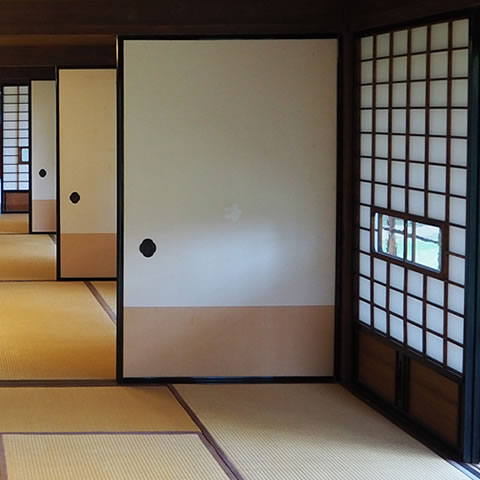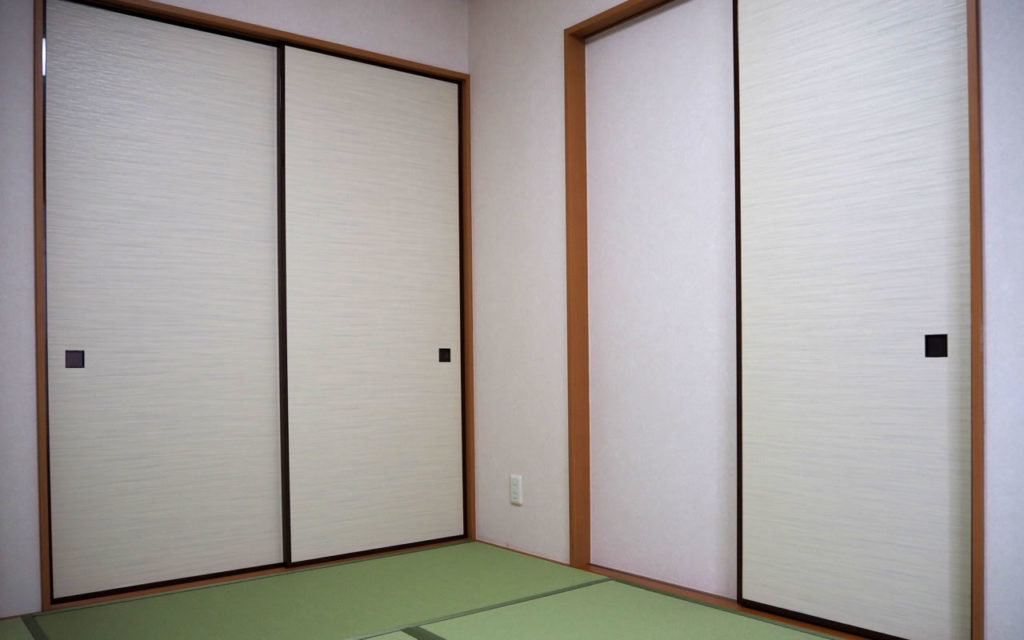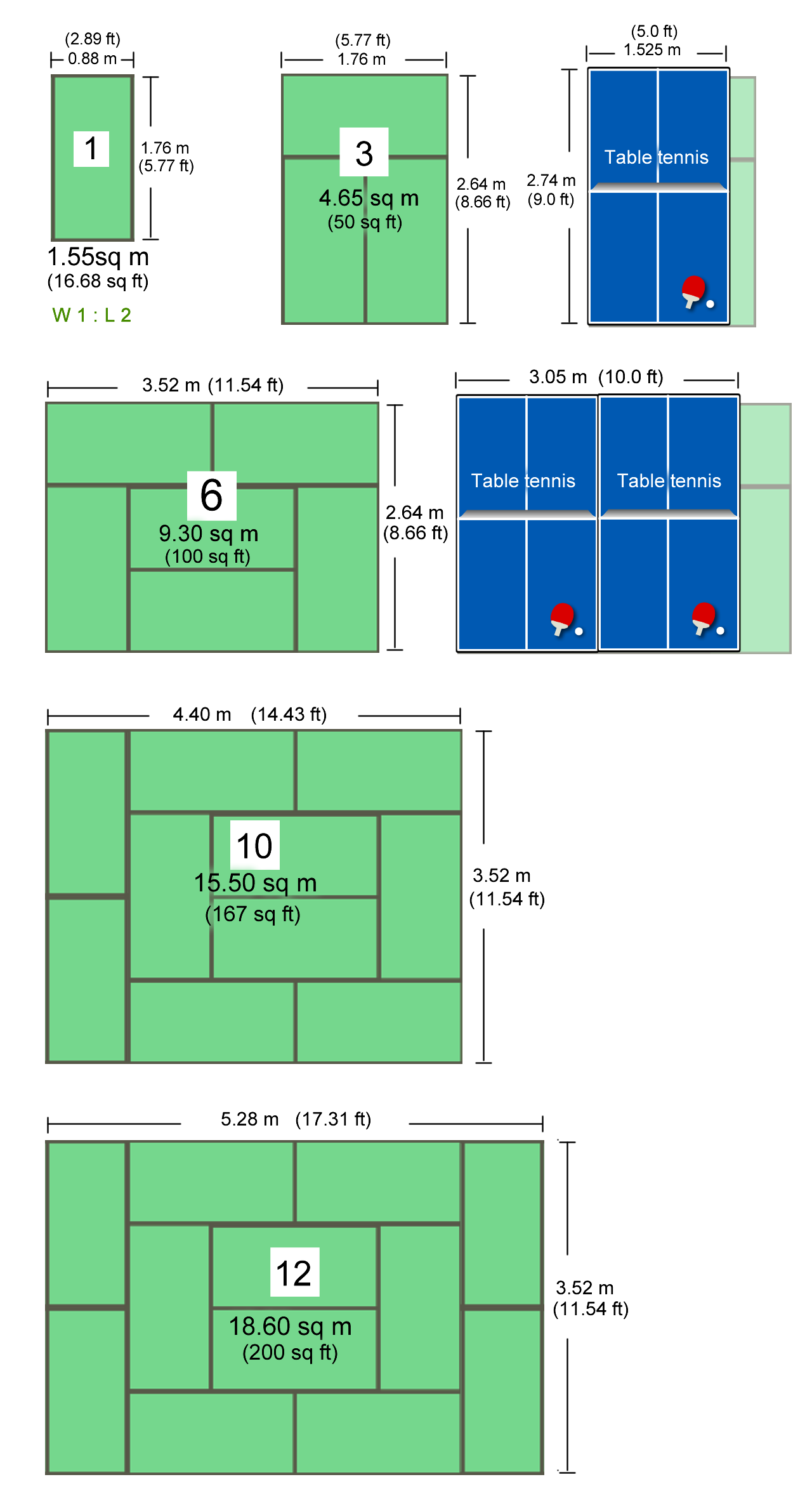What is “J” on the Japanese floor plan. It is the size of a Tatami mat!!
Some houses in Japan have rooms called Washitsu 和室, a Japanese-style room comprises of Tatami mats spread on the floor and traditional wood fittings such as Shoji 障子 and Fusuma 襖. Though the houses with Washitsu rooms have been decreasing in number, the notion of the Washitsu is still used in the housing design in Japan.
Characteristics of Washitsu Rooms
A Washitsu or Japanese-style room always comes with Tatami mats spread on its floor. Rooms with Tatami mats are commonly recognized as Washitsu, although other traditional fittings are included to precisely define what Washitsu is.
It has been said that the original form of the Washitsu room came from Samurai residences in the 14th century. For fitting with the lifestyle of samurai officials, the residence had been developed and designed rooms – a reception room, dining room, sleeping room, etc., all provided with Tatami mats. The room design was based on the number of Tatami mats to place. For example, the dining room is set to 6-mat size, and the reception room is set to 10-mat size, etc. Each room is separated with sliding doors called Fusuma, and also, another type of sliding door called Shoji is placed on the window side, which is used as curtains. The three of these, Tatami, Fusuma, and Shoji, are the main elements of Washitsu even today.
Tatami
Tatami is a rectangle-shaped mat, composed of a base mat(rice straw core) and a sheet of woven grass (Igusa rush) coving it. The base-mat is called “Tatami-Doko 畳床,” and the grass sheet is called “Tatami-Omote 畳表,” both are collectively called Tatami. Tatami mats are spread on the floor, on which people do not walk with shoes or slippers either. Tatami mats are softer than wooden floors and comfortable to step on. The air layer in the mat affects feeling cool in summer and warm in winter that is another feature of Tatami.
Tatami comes in several sizes which have differently standardized from regions to regions; The standard named Kyouma 京間 is in the Kansai and west areas, Chu-kyouma 中京間 in the west-middle area, and Edoma 江戸間 prevailed around the greater Tokyo area of Japan. Currently, the choice of the standard has no relevance to the region anymore. Which of the standard to use depends on the designer at the housing company/developer who makes up layout plans.
The average standardized size of a Tatami mat is;
Length: between 1.7m and 1.91m (5.58ft – 6.27ft)
Width: between 0.85m and 0.96m (2.79ft – 3.15ft)
In Tokyo, the standard often used is “Edoma,” the size is 1.76m × 0.88m (5.77ft x 2.89ft)
How to clean Tatami mats
You can use a vacuum cleaner to clean Tatami-matted floors. Move your cleaner back and forth slowly along with the woven texture of the mat so that you can avoid damaging the surface. Tatami mats should be kept dry and away from water. If you get a stain on the Tatami mat and need to remove it with water, use a slightly wet cloth and wipe off gently.
Tatami is replaceable.
Tatami sheet (Tatami-Omote) on the surface of the mat can be replaced when it gets old or damaged. Tatami replacement is called Tatamigae 畳替え and is supposed to be done at Tatami repair shops. Similar to carpets, Tatami is also a consumable. In the rental housing case, the Tatami replacement will be required when moving out, and the fee may be charged. Plastic Tatami mats, which are often seen at rental apartments, may not be replaced or otherwise, it depends on the condition.
Shoji
Shoji is a sliding door, made of a wooden frame with a paper sheet stretched on it. Shoji is like a paper-made, thin curtain letting the sunlight come through. Shoji has no lavish decoration. Instead, it is kept in a simple design that provides utility chic. One example is the functioned Shoji “Yukimi-Shoji 雪見障子,” allowing ones to enjoy viewing outside, such as a traditional Japanese garden, is like appreciation of paintings.

Yukimi-Shoji (at Yasuda Kusuo Residence). Yukimi-Shoji means Shoji for snow viewing, made to open partially to gaze at snow-falling without opening all the Shoji doors on a cold winter day.
Shoji paper is replaceable, allowing you to make it refresh every time you change the paper. The paper replacement is done at Shoji repair shops, but you can also do it by yourself. The paper for Shoji is called Shoji-Gami 障子紙 and sold at home improvement stores. Recently, shoji-Gami papers come with different types of functions; UV protection, tear-proof, etc. If you have a cat, tear-proof one will be a better choice.
Fusuma
Fusuma is basically a sliding door used in the separation of Washitsu rooms. Fusuma today is more often used as a closet door (Oshiire 押入れ) rather for room partition. Similar to Shoji, Fusuma is also made of a wood frame with a paper sheet, but Fusuma is thicker while it functions as a movable wall. The feature of the Fusuma is its flexibility in design. The paper of Fusuma can be decorative like wallpapers. Fusuma’s paper is called Fusuma-Gami 襖紙, and you can get them at a home improvement stores to replace by yourself. However, the replacement work is not easy, so it will be better to ask a professional at the Fusuma repair shop. The shop will offer you many choices of different decorative papers.
Room size measurement on Tatami mat basis
Since living style in Japan has been westernized, houses today rarely have Washitsu rooms with Tatami mats; instead, the room with a wooden floor is much more common, especially for apartments and condominiums. In spite of this lifestyle change, room size is still shown with the number of Tatami mats while the housing in Japan has been developed with the Tatami culture. In a floor plan, you will see indications saying like “Living room is 10 tatami-mat size” and “Kitchen is 3 tatami-mat size”.
According to the Fair Competition Code Concerning Representations (representation term) of the real estate advertisement, the Tatami mat size used in floor measurement must be 1.62 sq m or over. (The value is calculated from the floor area* divided by the number of Tatami-mats. *The floor area enclosed by the centerline of surrounding walls on all sides)
How to find room size based on Tatami mats
Here you find room-size calculation examples based on Tatami mat in Edoma standard (L) 1.76 m × (W) 0.88 m ( 5.77 ft x 2.89 ft ). Please note that there are several standards for Tatami-mat size, and the information here is for reference only.
1 Tatami-mat size = (L) 1.76 m x (W) 0.88m = 1.55sq m
Floor size = 1.55sq m x number of Tatami mats
Room with 3 tatami mats = 1.55sq m/mat x 3 mats
= Approx.4.65 sq m (Approx. 50 sq ft )
Room with 6 tatami mats = 1.55sq m/mat x 6
= Approx. 9.30 sq m (Approx. 100 sq ft )
Room with 10 tatami mats = 1.55sq m/mat x 10mats
= Approx. 15.50 sq m (Approx. 167 sq ft )
Room with 12 tatami mats = 1.55sq m/mat x 12mats
= Approx. 18.60 sq m (Approx. 200 ft )





